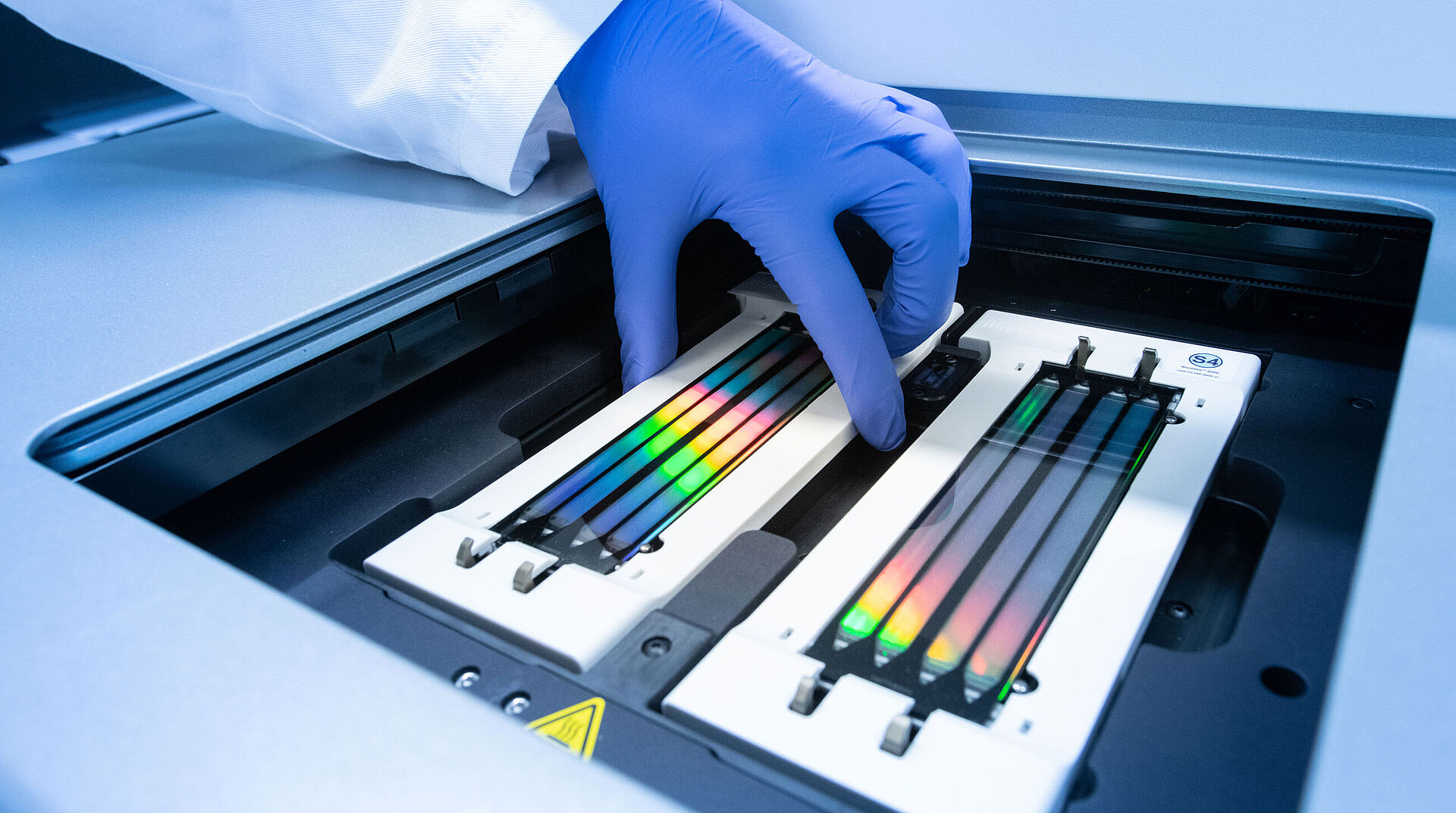Single-cell genomics is one of the groundbreaking developments of the last decade in the field of biomedicine. The research group led by Prof. Joachim Schultze at the DZNE has now published an essential guide to it in "Nature Immunology".
Prof. Dr. Joachim Schultze and the members of his research group are familiar with this situation: the phone rings or an e-mail arrives - and a colleague from somewhere else in the world asks for urgent advice. " ‘You've been working on single-cell genomics for so long, and we're stuck at this point' - we often get such requests here," says Schultze. The know-how that he and his team have built up over years of work is now contained in a kind of instruction manual that appears in the October issue of the renowned journal Nature Immunology.
The paper, a good dozen pages long, is a first: There is no comparable manual that introduces and explains aspects of the technology and its concrete application in basic and clinical research in such detail yet. "We are convinced that this paper will retain its great relevance for years to come," says Joachim Schultze. The initiative for the paper came from the expert editors: The influential journal asked the experts from the DZNE in Bonn if they could write such a guide, incorporating their years of experience with the technique, but also with advising other research groups.
We are convinced that this paper will retain its great relevance for years to come.
In single-cell transcriptomics, considered one of the most revolutionary methods of the last decade in biomedicine, researchers create a kind of molecular snapshot of all the cells in the sample under investigation. In this vast amount of information, scientists search for patterns and abnormalities using advanced algorithms and computer-assisted methods. In this way, it is possible to pick out from thousands of cells those that probably have something to do with the disease. Like a needle in a haystack, special features can be identified in certain cell types in complex cellular systems, which contributes to a deeper understanding of the processes in the body - at the smallest, molecular level.
Even though the current paper appeared in the journal Nature Immunology, the guidebook can easily be applied to other fields. The complex immune system, with all its different cells and states, is an ideal area of application, though the method has proven useful for numerous other questions as well. "Almost wherever there are clinical tissue samples, the technique can be applied. It opens up completely new possibilities to study complex molecular mechanisms with unprecedented resolution," describe Lorenzo Bonaguro and Jonas Schulte-Schrepping, two of the co-authors of the paper and DZNE researchers.
At DZNE, there are numerous research groups using single-cell genomics to elucidate the mechanisms of neurodegenerative diseases. In a current project, for example, samples from 200 Alzheimer's patients are being studied. "You can actually see changes early on in their blood. We look for typical parameters in the molecules and try to use them to detect even subtle changes," explains Joachim Schultze. The DZNE and the University of Bonn jointly maintain the PRECISE ("Platform for Single Cell Genomics and Epigenomics") platform, where they pool their expertise.
"The technology has been around for about 10 years, but in the past five years, and especially with the COVID-19 pandemic, its use has exploded," Schulte-Schrepping observes. They are still used mainly by highly specialized laboratories for basic and clinical research; for diagnostic purposes, the methods are not yet mature. For all research groups new to the field, there is the now-published guidebook in Nature Immunology.
Joachim Schultze describes these single-cell studies during the COVID-19 pandemic as a "finger exercise", because the immune response in corona patients is enormous - it was therefore quite easy to detect a change in the genes there. In chronic diseases, such as Alzheimer's and Parkinson's, this is much more difficult. The DZNE researchers, however, are making ever more progress in this complicated field. The numbers alone show that: In the past two years alone, they have examined more than 1,000 samples in their high-tech laboratories, producing 2.5 million single-cell transcriptomes.
Original publication
A guide to systems-level immunomics.
Bonaguro L. et al.
Nat Immunol (2022).
DOI: 10.1038/s41590-022-01309-9

